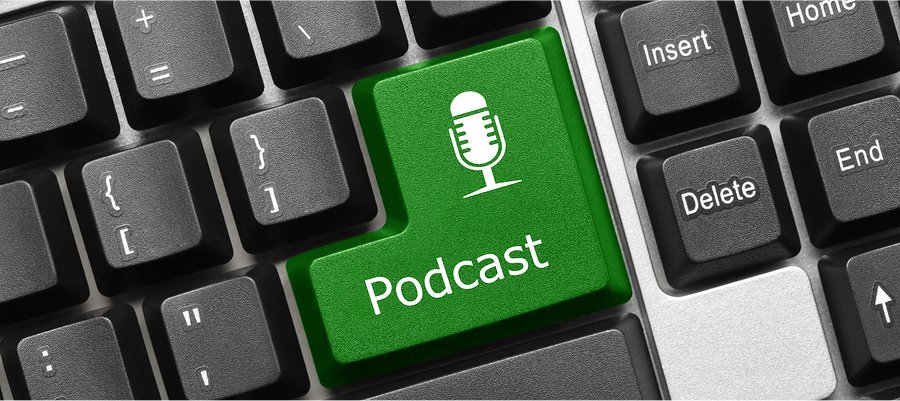How to Podcast the Right Way
- 25
- Oct

Podcasting is more popular than ever, with many organizations realizing it’s a great way to reach people while entertaining them during their morning drive, exercising, or during downtime at work. Contrary to the title of this post, there truly is no wrong way to do podcast, but there are techniques that will help maximize the number of listeners findings and sticking with your show.
Where should you record your show?
The first thing you need to consider is where physically you plan to record your show. When I podcast for myself or for clients, I use a dedicated studio space. While it’s best to have a studio with the walls lined with foam, not everyone can build one of those. At minimum, you need a quiet place that doesn’t echo very much. High ceilings are your enemy, but sometimes you have to make do with what you have. One pro tip is to record in a closet. The confined space will produce a surprisingly good sound. Another strange way to go is to record in your car. I learned this while I was a roving radio reporter. Because of the upholstery, there is no echo from inside your car!
How should you record your show?
Many people use a USB microphone like this one to record directly into their computer. I’m not a fan of this setup, because computers have fans, and many times you can hear that fan in the recording. When podcasting for clients, I use a digital recorder plugged into the output of a mixing board. My microphone and telephone interview setup are then plugged into the mixing board, so I’m able to adjust the sound levels. While this is optimal, it’s not required.
The digital recorder I use is the Zoom H2, which I call my “Swiss Army Knife recorder”. It can be plugged into a mixing board, but it also has a very good microphone as well. You can even screw on a handle, to put it in a microphone stand or hold it like a stick mic. If you can’t afford one of these, a decent digital voice recorder with a medium-quality microphone will also do.
How should you edit your show?
We all have times when we stumble, lose our place, or stop making sense. Thankfully, there is a fantastic open source audio editor that is available for free. For all of your editing needs, check out Audacity.
What should you record?
And now to the tough question. While audio quality is important, if your show is not very interesting or if it’s a disorganized mess, people will move on.
- Figure out why you want to do this show. What’s the point, really? If you’re podcasting for your organization, one of your biggest goals should be to educate the listener about your business. BUT, don’t use the time as an advertisement. Ads are necessary evils that people put up with in order to get to the real content. They’re not likely to stick around if all of the content is an advertisement. Instead, perhaps use the time to give tips on what you do for a living, whether it’s marketing, manufacturing, or a nonprofit. People may tune in to learn, and if they really want more information, they’ll reach out to you because they now consider you an expert.
- Find a topic that’s interesting to you. If you’re not interested, your listeners won’t be either. Your show topic should be a passion.
- Organize each episode in advance. I don’t mean you should script the show, because it will become painfully obvious very quickly that you’re reading to the listeners, unless you’re a professional broadcaster with years of experience. You should have a plan for the flow of the show, with bullet points to guide you through the program. Even the most free-wheeling radio shows do this.
- Have a conversation. Whether you have one host, two hosts, or more, the discussion should be conversational. No one wants to listen to a heavily scripted program. Don’t sweat it if you include an occasional “um” and “er” in the flow of your conversation. That’s how people talk, and your listeners aren’t likely to notice it much, unless it’s every third word.
- Do interviews. Bringing in experts, either from inside or outside your organization, is a great way to move the conversation along. Ideally, these interviews should be in person, but if you need to record a telephone conversation, there are technical solutions available on your app store or via retailers like Amazon.
- Add music. Nothing moves things along and sets the mood like music. Production music libraries are fairly affordable. Check out a variety of them here.
How should you distribute your program?
First and foremost, your podcast should be available on your website. However, you want people to find it elsewhere as well. If you know how to create an RSS feed, which is pretty easy using a platform like WordPress, it’s not hard to get your podcast included on iTunes. Because iTunes is exclusively on iPhones, you should also include your show on sites like Stitcher and Google Play.
When you publish a new episode of your podcast, you should also post about it on social media like Facebook, Twitter and LinkedIn.
Would you like some samples?
You can listen to a few shows we’ve produced for clients on our podcast samples page.
Any questions?
Podcasting can be very valuable, but a little frightening for people. If you have questions, feel free to leave them in comments, or use our contact form to reach out to me directly.



